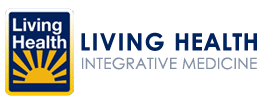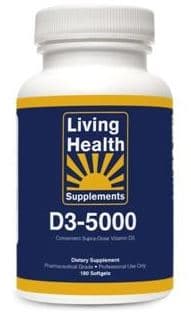Summer In The Sun And Still Low On Vitamin D?
Summer In The Sun And Still Low On Vitamin D?

Many people do not consider a vitamin deficiency as a serious condition or vitamins as healing agents.
I was reviewing bloodwork with a patient and their vitamin D levels were really low, 8. His wife was so surprised and said “You have Rickets!” At her reaction he now wanted to resolve the issue. He didn’t have rickets but we put him on a regimen to get his vitamin D levels back to optimal levels between 60-100 ng/ml.
Some patients with chronic aches, pains or fibromyalgia who were vitamin D deficient had their symptoms reduced and even eliminated once their vitamin D levels were optimized.
Recent studies show that 42% of Americans are deficient in vitamin D, nearly half!
Vitamin D deficiency has been linked to mood swings, depression, lack of energy and even chronic skin conditions. No wonder the sun makes us feel so good.
Our bodies make vitamin D when our skin is exposed to the light from the sun. Most people do not get enough sun. Even in the summer time, although we might be out in the sun a lot more, we are often covered by sunscreen.
Check out his link to see what type of sunscreen to buy:
Vitamin D is critical in preventing cancer, osteoporosis, diabetes, heart disease, hypertension, pancreas function, insulin sensitivity and healthy brain function.
Optimal range is from 40-100ng/ml with a minimum goal of 80 for cancer and diabetic patients.
Studies have shown that breast cancer patients have a 50% increased chance of survival if their vitamin D levels are in optimal range.
Vitamin D assists the body on a cellular level with:
- Proper bone health, as it regulates our body’s calcium levels.
- Stimulates calcium absorption and reduces calcium excretion, thereby encouraging the maintenance of healthy bones and teeth. Without adequate absorption, the body must take calcium from its stores in the skeleton, which weakens existing bone and prevents the formation of strong, new bone.
- Aids the immune system by helping to support the body’s natural response to fight off illness.
- Healthy prostate, colon and breast tissue are also supported by vitamin D.
What to do?
- Get tested for 25 OH vitamin D. The current range for “normal” is 10 to 55 ng/ml. For optimal health the range should be 40 to 100 ng/ml.
- Take the right type of vitamin D. The only active form of vitamin D is vitamin D3 (cholecalciferol). Many vitamins and prescriptions of vitamin D have vitamin D2 – which is not biologically active.
- Take the right amount of vitamin D. If you have a deficiency, you should correct it with 5,000 to 10,000 IU of vitamin D3 a day for approximately 3-6 months while under a doctor’s supervision. It might take longer depending on your individual situations. Age, normal sun exposure, time of year and even skin color can affect your sunlight driven vitamin D levels. For a maintenance dose take 2,000 to 4,000 IU a day of vitamin D3.
- Monitor your vitamin D status until you are in the optimal range. If you are taking high doses (10,000 IU a day) your doctor must also check your calcium, phosphorous, and parathyroid hormone levels every 3 months.
- Eat dietary sources of vitamin D daily:
- Fish liver oils, such as cod liver oil. One tablespoon
- Cooked wild salmon.
- Cooked mackerel.
- Sardines, canned in oil, drained.
- One whole egg
Supplements:
Studies have shown Vitamin D3 to be approximately 87% more effective than Vitamin D2.
 Supports Bone Strength and Dental Health
Supports Bone Strength and Dental Health- Supports Modulation of Immune Function
- Supports Healthy Cell Differentiation
- Supports Neurologic and Cognitive Health
- Supports Musculoskeletal Comfort
- Supports Cardiovascular Health and Healthy Blood Sugar Metabolism
- Supports Vitamin D Repletion in Cases of Dietary Deficiency, Limited Sunlight Exposure, or Use of Depleting Therapies
https://livinghealthmarket.com/collections/blood-sugar-support/products/d3-5000
References
- Chaney, S. C. (2017). Defeat Diabetes 33 Effective Strategies To End Diabetes Before It Ends You. Shelby Marketing Associates.
- Heaney RP, Recker RR, Grote J, et al. Vitamin d3 is more potent than vitamin d2 in humans. J Clin Endocrinol Metab. 2011 Mar;96(3):E447-52. [PMID: 21177785]
- https://www.cantonmercy.org/healthchat/42-percent-of-americans-are-vitamin-d-deficient/
- https://drhyman.com/blog/2010/08/24/vitamin-d-why-you-are-probably-not-getting-enough/
- WB, G. (2019). An estimate of premature cancer mortality in the U.S. due to inadequate doses of solar ultraviolet-B radiation. - PubMed - NCBI . Ncbi.nlm.nih.gov. Retrieved 6 August 2019, from https://www.ncbi.nlm.nih.gov/pubmed/11920550
- Mohr SB, e. (2019). Meta-analysis of vitamin D sufficiency for improving survival of patients with breast cancer. - PubMed - NCBI . Ncbi.nlm.nih.gov. Retrieved 7 August 2019, from
- https://www.ncbi.nlm.nih.gov/pubmed/24596354



